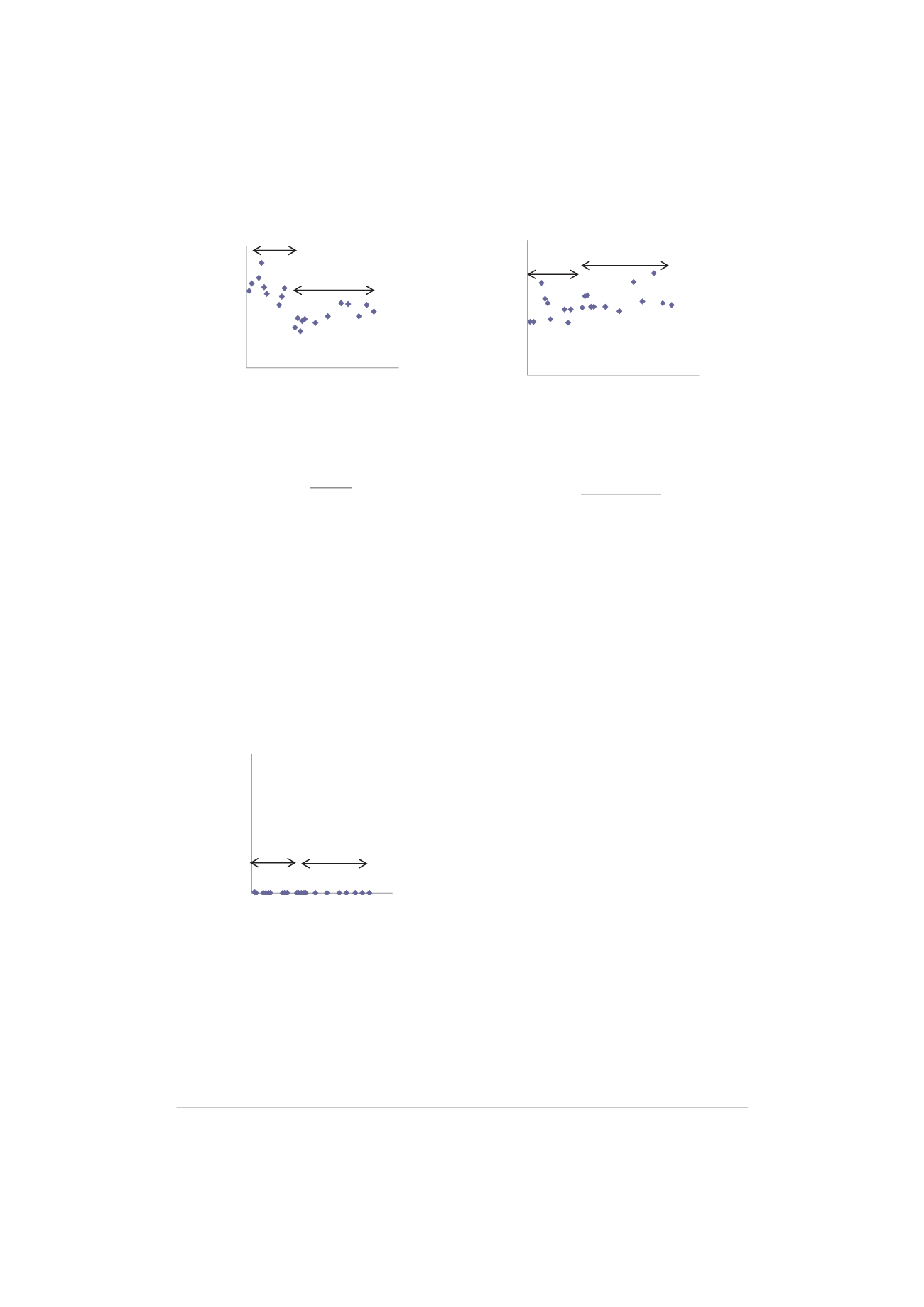
2011 International Conference on Alternative Energy in Developing Countries and Emerging Economies
- 97 -
(b)
Fig. 4. Time course of H
2
(Fig. 4 a) and CH
4
content (Fig. 4b) from
the bioreactor that contained chloroform pretreated bacteria
.
The results demonstrated that the hydrogen
production potentials of the chloroform and freezing
pretreated brewery sludge were not efficient compared
with the first three methods (heat, acid and base
pretreatment methods) during fermentative H
2
production.
It is recommended from this study that use of the
normal brewery wastewater that typically is used for
CH
4
production is not feasible for H
2
production by dark
fermentation with the pretreatment methods to the
bacteria that were tested. Further studies to identify
more appropriate methods will be required in order to
produce H
2
efficiently.
(a)
(b)
Fig. 5. Time course of H
2
(Fig. 5 a) and CH
4
content (Fig. 5b) from
the bioreactor that contained freezing and thawing pretreated bacteria.
IV. C
ONCLUSIONS
The normal brewery wastewater that typically is used
for CH
4
production was not appropriate to produce H
2
.
Although, the pretreatment steps adopted for increasing
the H
2
production from anaerobic inocula were found to
be effective for a glucose-based substrate they were not
for brewery wastewater. To produce H
2
effectively, a
specific method of pretreatment and system operation
must be further studied. Methane producing bacteria
from the plant generating brewery wastewater tolerated
heat and chemicals and could be recovered when
sufficient time was allowed. We, therefore, do not
recommend attempts to produce H
2
instead of CH
4
by
using brewery wastewater as a sole substrate.
A
CKNOWLEDGMENT
This research was supported by Kasetsart University
Research and Development Institute (KURDI), Kasetsart
University, Bangkok, Thailand.
R
EFERENCES
[1] Lee, H. S.; Salerno, M. B. ; Rittmann, B. E.:
Thermodynamic evaluation on H
2
production in glucose
fermentation
, Environmental Science & Technology, vol.
42, 2008, pp. 2401
–
2407.
[2] Levin, D. B.; Pitt, L.; Love, M.:
Biohydrogen production:
prospects and limitations to practical application
,
International Journal of Hydrogen Energy, vol. 29, 2004,
pp. 173
–
185.
[3] Li, C. L. ; Fang, H. H. P.:
Fermentative hydrogen
production from wastewater and solid wastes by mixed
cultures
, Critical
Reviews in
Environmental Science
and
Technology, vol. 37, 2007, pp. 1
–
39.
0
20
40
60
80
100
0 10 20 30 40 50 60
Time (days)
CH
4
(%)
Glucose-based substrate
Brewery wastewater
0
20
40
60
80
100
0 10 20 30 40 50 60
Time (days)
H
2
(%)
Brewery wastewater
Glucose-based substrate
0
20
40
60
80
100
0 10 20 30 40 50 60
Time (days)
CH
4
(%)
Glucose-based substrate
Brewery wastewater


